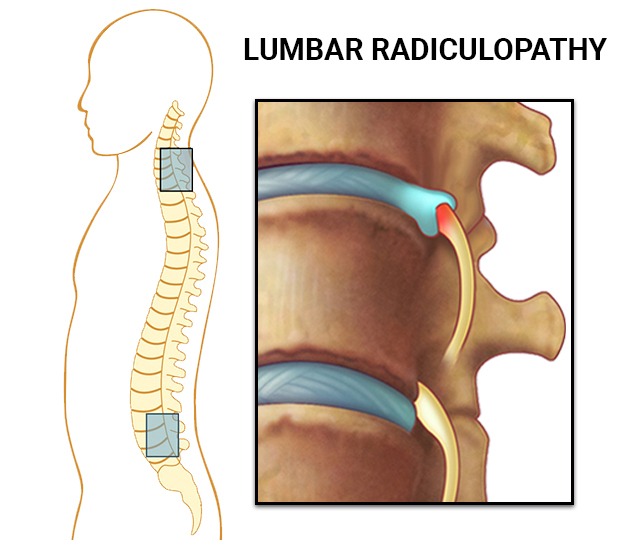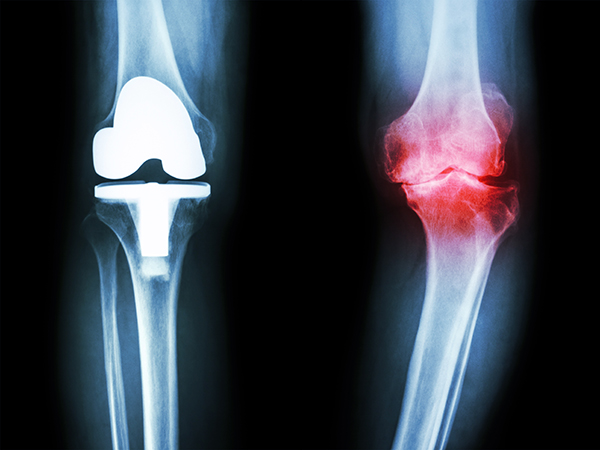Have you ever experienced your spine as a potential hazard, ready to flare up with torment at the slightest provocation? If so, welcome to an unfortunately large club. For many veterans, this isn’t just discomfort—it’s a debilitating reality linked directly to their military service. It’s not uncommon for those suffering from chronic back pain to develop secondary conditions for back pain va disability.
Picture your spine as an interconnected network of nerves and muscles—when one part is in distress, it can set off a chain reaction affecting other parts of your body. Imagine feeling that every single day.
Intrigued? Buckle up because we’re diving deep into how these secondary conditions evolve and why they matter when seeking VA disability benefits.
Understanding VA Ratings for Back Problems and Pain
The VA Disability Calculator is a handy tool to estimate your potential disability rating. When it comes to back problems and pain, the VA takes several factors into account. The VA considers a variety of elements when determining the level of disability caused by back issues and pain, such as its severity, influence on everyday activities, plus any related conditions.

Total disability based on individual unemployability (TDIU) can be awarded if back pain significantly impairs one’s ability to work. But how does this process work? Let’s explore further.
Your Current Diagnosis Matters
If you’re a veteran suffering from debilitating back pain caused by an in-service event, then that’s just step one. You’ll need a current diagnosis linking your symptoms directly to military service – known as direct service connection.
A typical example might be spinal stenosis causing chronic pain due to injuries sustained during active duty. This type of medical evidence plays an essential role when determining eligibility for awarding disability benefits.
The Importance of Secondary Conditions
Often overlooked are secondary conditions linked with primary health issues like severe backache – these too may qualify for compensation under VA secondary rules.
Radiculopathy occurs when nerves connected with the spinal cord get compressed or irritated because of underlying spine problems; hence it is common among veterans experiencing extreme discomfort due to their primary condition, i.e., agonizing lumbar ache. Similarly, mental health ailments such as depression and anxiety could also surface owing to persistent distress arising out of intense physical agony.

Mental Health Conditions Associated With Chronic Pain
An astonishing fact revealed through numerous studies shows that around half of adults battling long-term torment end up dealing with psychological disorders. The unending cycle of anguish can make it hard for veterans to exist in a typical way, eventually having an effect on their mental health.

Secondary Physical Conditions Resulting From Back Pain
Some physical conditions may be closely linked to your chronic backache. This means that your knee or foot trouble might not be a separate problem, but rather a secondary service-connected disability according to VA’s terms. So, don’t overlook the possibility that these issues may be interconnected and could stem from your persistent back pain.
Key Takeaway:
Getting a grip on VA disability ratings for back pain involves understanding several factors. These include your condition’s severity, its effect on daily life, and any secondary conditions. For veterans with debilitating back pain tied to service events, current diagnosis is key to getting benefits. Don’t forget that related issues like radiculopathy or mental health problems due to chronic physical discomfort can significantly influence the final rating decision.
Primary Service-Connected Condition and Secondary Service-Connected Conditions
The difference between primary service-connected conditions and secondary ones is pivotal in understanding VA disability ratings. A veteran might be qualified to get VA disability benefits if they experience back pain. But this hinges on establishing a service connection for their back condition.
Direct vs. Secondary Service Connection
A direct service connection refers to health issues that are directly linked to military service. For instance, if an in-service event caused your back injury, it would be considered a direct service-connected condition. In contrast, secondary conditions are health problems stemming from the primary one.

This distinction becomes critical when we consider something like mental health or sleep apnea as potential secondary conditions for back pain va disability.

If you’re living with chronic pain because of a debilitating spinal cord issue or severe spinal stenosis developed during active duty – these could potentially lead to mental health concerns or disrupt your sleeping patterns over time. So while they aren’t caused by an in-service incident directly (like the initial spine problem), these ‘spin-off’ ailments can still fall under secondary service-connected disabilities.
In such cases though, veterans need strong medical evidence linking these conditions together. It’s not enough just saying “my back hurts so I have trouble sleeping.” You must give concrete proof – through tests results or doctor statements – showing how exactly your sleep apnea sprouted from persistent lower-back agony.

Remember: Understanding the nuances between primary and secondary conditions can significantly influence the outcome of your VA disability claim. This isn’t just about getting a higher rating, but more so to ensure you get the right support for all health issues arising from your military service.
Key Takeaway:
Understanding the difference between primary and secondary service-connected conditions is key for your VA disability claim. If you’re a veteran suffering from back pain, it’s not just about direct injuries during service but also health issues that stem from them. Chronic pain could lead to mental health concerns or sleep apnea – these ‘spin-off’ ailments are considered secondary disabilities. But remember, recognizing this connection can make all the difference in your claim.
Common Secondary Conditions Associated with Back Pain

If you’re a veteran with chronic back pain, it may be associated with other health conditions known as secondary conditions which can impact your quality of life. Secondary conditions associated with chronic back pain can have a serious impact on quality of life.
Mental Health Conditions and Back Pain
It’s not unusual for veterans enduring persistent pain to also experience mental health issues such as depression or anxiety. In fact, recent studies show lower back pain is one of the most common VA secondary conditions, often leading to serious mental health problems. So if your mood has been on a downward spiral because of relentless backache, it’s important to let someone know – this isn’t something you need to face alone.
Physical Secondary Conditions to Back Pain
In addition, physical ailments such as radiculopathy (nerve damage), shoulder troubles or hip distress can all stem from chronic back discomfort. For example, spinal stenosis (narrowing of the spine) may cause debilitating leg pains which could potentially qualify as a disability based on VA ratings standards.
The link between primary condition (your existing injury) and these additional ailments can feel like a mystery at times but understanding how they connect will help navigate through filing successful claims.

Please remember that every case varies greatly so make sure you get advice tailored specifically for your situation by contacting us for a free case evaluation today.
Submitting a Claim for Secondary Conditions
Are you cognizant that, as a veteran with spinal soreness caused by your service in the military, there are allowances accessible from the VA? But did you know that secondary conditions related to your primary back condition can also be recognized by the VA?
The Role of Medical Evidence in Claims

To get started, it’s essential to provide medical evidence linking your secondary health condition directly with your service-connected back pain. This includes documentation like medical records or expert opinions stating that one condition is caused or aggravated by another.
In fact, getting an independent medical opinion might make all the difference when it comes down to awarding disability benefits.
Filing Your Disability Claim

You’ll need two key pieces of information: A current diagnosis and proof that an in-service event led to said diagnosis. Make sure each piece of evidence shows clear links between primary and secondary conditions – this connection is vital.
This may sound daunting but remember there are resources out there designed specifically for veterans filing claims like yours.
Navigating Complexities with Help

Sometimes complexities arise during claims processing – especially where mental health is concerned since psychological issues often develop as result chronic physical discomfort yet their correlation isn’t always immediately apparent so additional support could prove beneficial here too; our team Vet Claim Solutions has ample experience dealing cases similar nature we’re here help.

Finally, if you find the process too overwhelming or need further assistance, consider a free case evaluation. This will give you an understanding of your case and guide on how to proceed with your claim.
Key Takeaway:
When filing a VA disability claim for secondary conditions related to back pain, remember that medical evidence linking your health issues is crucial. Get expert opinions and keep clear records of the connection between primary and secondary ailments. If things get tough, don’t hesitate to seek help from experienced coaches from Vet Claim Solutions.
Defining Secondary Service-Connected Conditions

When it comes to VA disability, the term ‘secondary service-connected condition’ often pops up. But what does this mean? In simple terms, a secondary service-connected condition is a health issue that’s directly caused or worsened by another medical problem you already have – and for which you’re receiving VA benefits.
A primary condition could be something like back pain resulting from an injury during your military service. Now let’s say this chronic back pain leads to mental health issues such as depression or anxiety; these would be considered secondary conditions because they arose due to the primary ailment.
The connection between physical discomfort and emotional distress isn’t uncommon. It’s supported by research indicating a close link between chronic pain and deteriorating mental health in veterans.
Differentiating Between Primary And Secondary Conditions
To better grasp how secondary conditions work within the realm of VA disabilities, we need to understand their relationship with primary ailments first. The latter refers to any injuries or illnesses linked directly to your time in uniform – these are called direct service connections.
In contrast, if you develop additional health problems because of that initial affliction (like our example earlier), those fall under ‘secondary’. For instance, shouldering continuous severe pain can trigger stress-related disorders like insomnia – making sleep apnea a possible secondary complication connected indirectly through military service.
Filing Claims for Secondary Conditions
If you believe there are more ailments related to your original injury/illness, you have the right to file a claim for secondary conditions. The VA has procedures in place for this purpose and help is available if needed.
It’s essential to provide medical evidence linking your primary and secondary conditions. If you can show that your back pain (primary) caused another health issue like depression (secondary), it could potentially increase your disability rating, leading to higher compensation from the VA.
Key Takeaway:
Understanding ‘secondary service-connected conditions’ is crucial when dealing with VA disability. These are health problems that occur or worsen due to a primary condition you’re already receiving benefits for, like back pain leading to mental health issues. Recognizing the connection between physical and emotional distress can help differentiate between primary and secondary ailments. Remember, it’s your right to file claims for these secondary conditions if they have developed as a result of an existing ailment.
Lumbar Radiculopathy as a Secondary Condition

This is one of the common secondary conditions linked with service-related back issues.
Radiculopathy occurs when nerve roots near the spine are damaged or compressed, often due to chronic pain or injury. Lumbar radiculopathy refers specifically to this issue occurring in the lower spine.
Symptoms and Diagnosis
The symptoms can range from mild discomfort to debilitating pain, impacting your daily life activities significantly. You may feel numbness or tingling sensations radiating down your legs. The diagnosis usually involves medical tests such as MRI scans or EMG studies.

To link this condition directly with your military service would need robust medical evidence showing that an event during active duty caused these health conditions.
Claiming VA Disability for Lumbar Radiculopathy
You might be wondering how does one go about getting disability benefits for this? First off, remember you don’t have to tackle all of it on your own – we’re here at Vet Claim Solutions ready help.

Your first step should involve obtaining a current diagnosis from a healthcare provider familiar with spinal cord injuries and their complications. They will need documentation that links your symptoms explicitly with luminary radiculopathy – making sure they understand exactly what’s going on helps immensely.
Our VA Disability Calculator can provide some guidance about potential benefits based on different scenarios.
Achieving Secondary Service Connection
Claiming lumbar radiculopathy as a secondary service-connected condition can be difficult, yet with the right guidance and support it is achievable. You need to provide medical evidence linking your primary service-connected back pain with this new ailment.
Though it may be intimidating, you don’t have to take this journey by yourself – our well-versed VA attorneys are ready and eager to help veterans such as yourself every step of the way.
Key Takeaway:
Dealing with back pain as a veteran? It could escalate to lumbar radiculopathy, a common secondary condition. Symptoms might vary from slight discomfort to extreme pain. For diagnosis, you’ll need solid medical proof that links it directly to your military service. But hey, don’t stress. Filing for VA disability benefits may seem tough but remember we at Vet Claim Solutions are always ready and eager to lend a hand.
Degenerative Arthritis as a Secondary Condition

Back pain can be the cause of multiple accompanying illnesses, one of which is degenerative arthritis. This common condition occurs when the cartilage that cushions your joints wears down over time, often due to chronic stress and strain like enduring back pain.
The VA recognizes this connection between back pain and degenerative arthritis, allowing veterans suffering from these issues to seek disability benefits. But getting those benefits isn’t always straightforward—you need substantial medical evidence linking your in-service event (the cause of your primary back problem) with your current diagnosis of arthritis.
Filing for VA Disability Based on Degenerative Arthritis
To get started with a claim based on degenerative arthritis as a secondary service-connected condition, you’ll need more than just experience pain. You’ll have to provide medical evidence showing that the condition was indeed caused by or aggravated by military service.

This could be challenging without professional help. At Vet Claim Solutions we’ve helped numerous veterans successfully navigate this process using our free case evaluation service.
The Role of Medical Nexus in Your Claim
A key component in any successful VA disability claim is establishing what’s known as a ‘medical nexus’. A strong medical nexus provides clear proof linking the veteran’s active duty service directly or indirectly (through their primary health condition) with their present disabling condition—degenerative arthritis in this context.
Other Secondary Conditions Associated with Back Pain
Living with back pain can be a tough battle. But what many don’t realize is that it often brings along uninvited guests – secondary conditions caused by the primary issue of back pain.
Sexual Dysfunction and Back Pain

The tie-in between sexual dysfunction and prolonged back pain is not discussed enough, but it’s more prevalent than one would imagine. When your spinal cord suffers from debilitating issues such as spinal stenosis, it may interfere with nerve signals essential for sexual health. Both sexes can be affected by this.
Maintaining an open dialogue about these concerns with healthcare providers or a coach to guide you through the VA Claims process, who understands how veterans experience these complex health conditions, can help manage expectations and find solutions.
Foot Conditions Secondary to Back Pain

Another unexpected guest on this list includes foot conditions linked to chronic back pain. It sounds strange at first – how does your spine affect your feet? The answer lies within our body’s network of nerves.
Radiculopathy occurs when a nerve root near the spine becomes compressed or irritated. If you have lumbar radiculopathy due to degenerative changes in your lower back (the lumbar region), this might manifest as leg or foot weakness, numbness, tingling sensations or even sharp pains radiating down one leg into the foot – commonly known as sciatica.
These examples underscore why veterans should seek free case evaluation if they believe their service-connected condition has led to other health issues over time.
Remember: Always consult professionals like those at Vet Claim Solutions who can guide you through the process of submitting a claim for secondary conditions. It’s about making sure your VA disability rating truly reflects how military service has impacted your health.
Key Takeaway:
Back pain isn’t a solo act – it often drags along unwelcome secondary conditions. It can lead to sexual dysfunction due to disrupted nerve signals and foot issues from compressed nerves near the spine, like radiculopathy causing sciatica symptoms. Don’t overlook these; get help to ensure your VA disability claim fully reflects how service has affected your health.
FAQs in Relation to Secondary Conditions for Back Pain Va Disability
1. What are the secondary conditions caused by back pain?
Secondary conditions from back pain can include mental health issues, radiculopathy, shoulder problems, plantar fasciitis, and hip pain.
2. Can sleep apnea be secondary to back pain?
Sleep apnea isn’t usually tied directly to back pain. However, obesity is a common cause of both ailments.
3. What is an example of a secondary condition VA?
A typical VA secondary condition could be lumbar radiculopathy or degenerative arthritis resulting from service-connected lower back trouble.
4. Can back pain be secondary to knee pain?
Knee troubles may lead you to alter your gait. This change can result in stress on the spine and eventual back discomfort.
Conclusion
Decoding the world of VA disability can be tricky, but you’re now better equipped to navigate it. You’ve learned about primary and secondary service-connected conditions. It’s clear that back pain isn’t just a standalone issue—it’s often the starting point for other health problems.
The relationship between chronic back pain and mental health is no secret anymore. Neither are physical issues like radiculopathy or degenerative arthritis as secondary conditions for back pain va disability.
You’ve discovered how to submit claims for these conditions linked to your military service-related back troubles. Remember: knowledge is power in getting the help you need.
In essence, every step matters—from understanding ratings to recognizing connections between ailments—to successfully navigating this complex journey towards obtaining deserved benefits.

